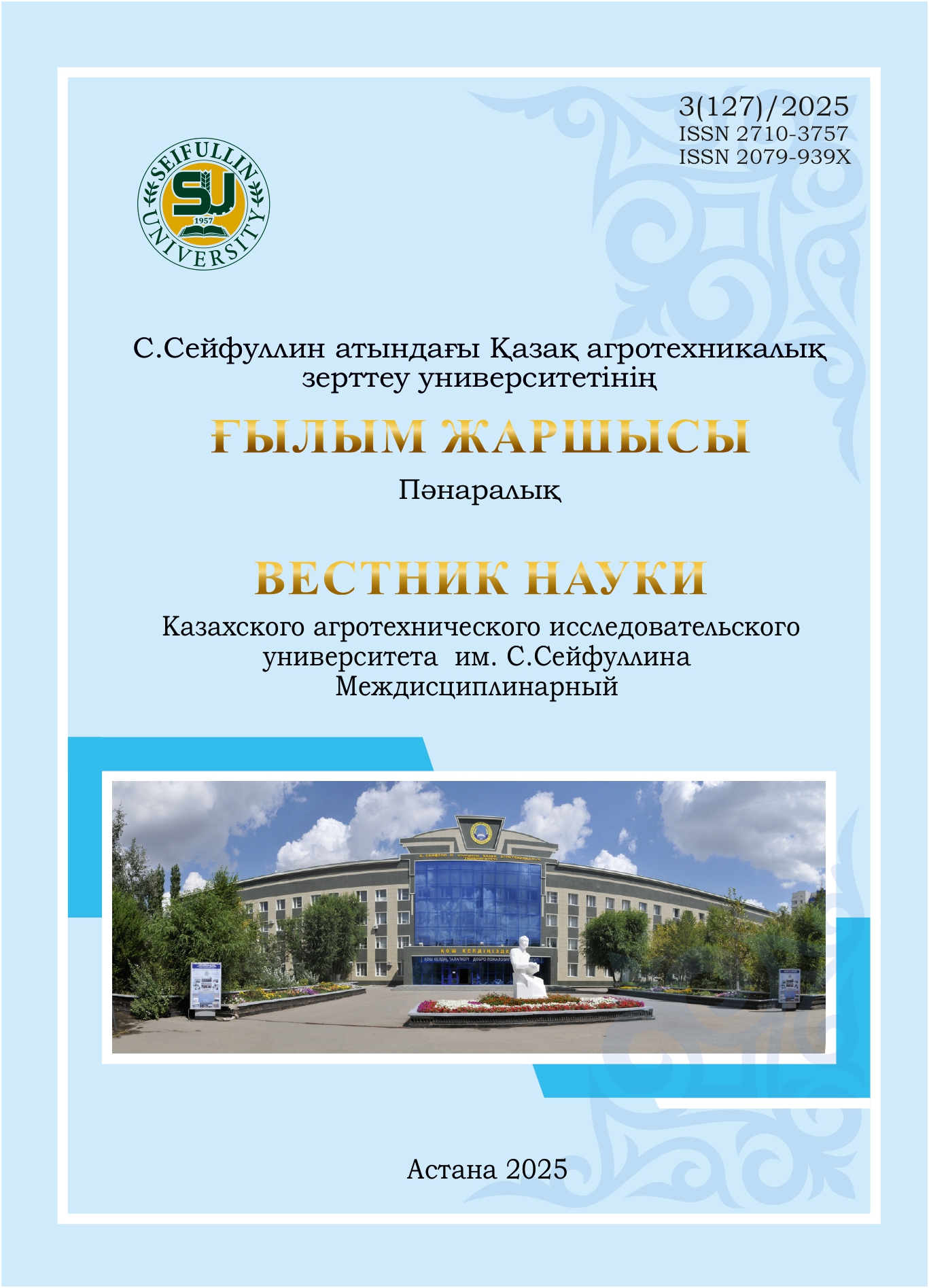Yield and crop structure elements of soybean varieties at different sowing dates and seed treatments
DOI:
https://doi.org/10.51452/kazatu.2025.3(127).2026Keywords:
soybean; sowing date; seed treatment; field germination; plant survival; yield.Abstract
Background and Aim. Soybean is one of the strategically important crops widely used in the food and feed industries. In Northern Kazakhstan, its yield lags behind that of leading producing countries due to unfavorable climate conditions, limited availability of high-yielding varieties, and the spread of diseases. The aim of this study was to determine the effect of sowing dates and pre-sowing seed treatment options on the productivity of soybean varieties in the risky farming zone.
Materials and Methods. Field experiments were conducted in 2021-2023 at the experimental field of “Kamenka and D” LLP (Akmola region). The tested varieties were Ivushka, Eldorado, and Birlik KV. Sowing dates: May 10-20 and May 20-30. Seed treatment variants: control, TMTD, TMTD + Haistik, TMTD + Haistik + Novosil. Evaluated parameters included field germination, plant survival, and yield.
Results. The highest values were obtained with the sowing date of May 10-20. The combined use of TMTD + Haistik + Novosil positively influenced yield structure elements, increasing the number of pods and seeds per plant, 1000 seed weight, and biological yield. The maximum result was observed for the early-maturing variety Ivushka, which averaged 15.4 c/ha over three years. Later sowing dates reduced productivity indicators across all varieties.
Conclusion. The study established that the optimal combination of sowing date and seed treatment is a decisive factor in increasing soybean yield under the conditions of Northern Kazakhstan. The most effective option was sowing between May 10-20 with the application of TMTD + Haistik + Novosil, particularly for the variety Ivushka, which can be recommended for practical use.

